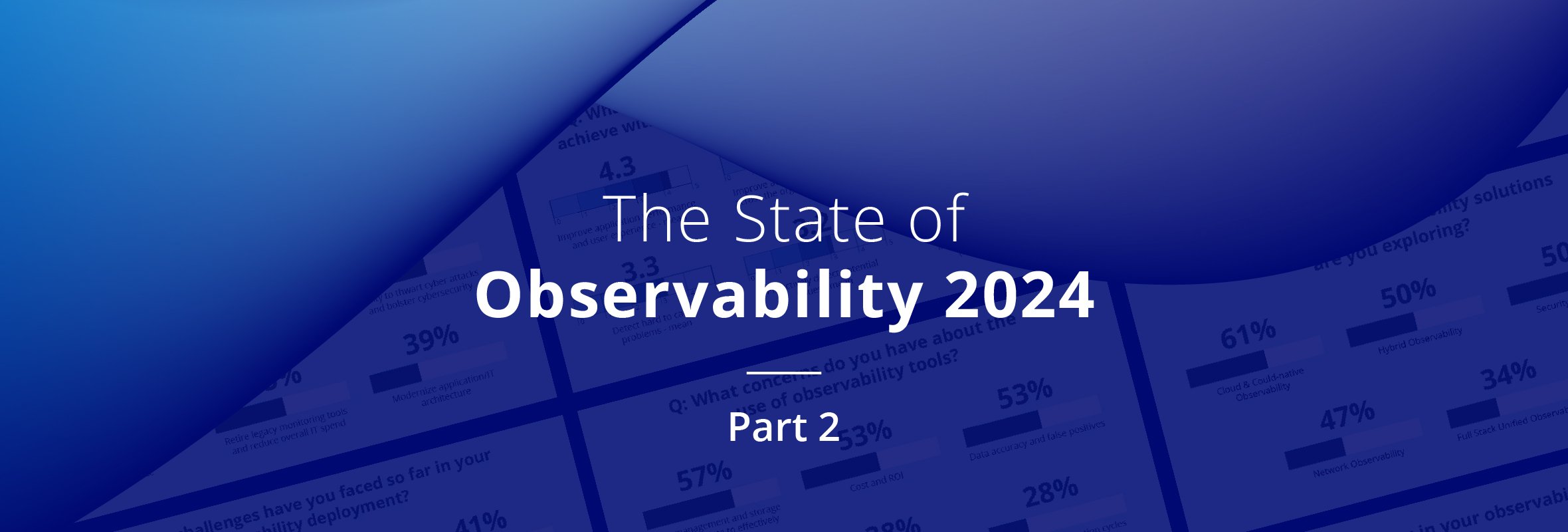Editor’s Note: This is the second installment of a series of blog posts previewing our State of Observability 2024 survey report.
In the first episode of this blog series, we looked at where IT organizations are in their observability journeys and found, rather surprisingly, that most enterprise IT organizations and MSPs were just getting started in observability. Yet 96% of respondents told us their observability solution was delivering the value they expected. This week, we look at what benefits organizations are realizing from observability and the challenges and concerns they’re overcoming along the way.
Key Benefits Realized So Far
As we learned last week, the promise of observability is to learn more about a system’s internal performance by the external data it generates. Based on our survey results, observability is delivering on that promise. We asked our survey respondents what benefits they’ve realized from observability so far. The top two responses, “Ability to discover performance issues we didn’t realize we had” at 59% and “Ability to detect and respond to performance issues before users/customers are impacted” at 58% indicate that observability deployments, nascent though they may be, are delivering new insights that organizations weren’t getting out of their legacy monitoring tools. Those insights are helping ITOps teams to get ahead of performance issues before their users are impacted.

The benefits of observability appear to be exceeding our survey respondents’ own expectations. When we asked them what key outcomes they expected to achieve with observability, “Detect hard to catch problems” and “Proactively detect potential issues” both registered, but came in a bit low, scoring just a 3.3 and 3.2 on a scale of 1 to 5.

Data Issues Are Top Observability Challenges
Of course, there are challenges to overcome to realize these benefits from observability. Managing and storing all the data collected by observability tools (63%) and the complexities of analyzing that data (57%) were the top two challenges cited by our survey respondents.

Runaway costs were much less of an issue, at 37%. Costs, however, scored much higher on our respondents’ lists of concerns about observability, coming in second to “Data management and storage” at 53%.

Clearly, observability isn’t easy, but so far it seems to be exceeding performance expectations while not draining organizations’ budgets as much as they feared.
Next week, we’ll look at whether observability solutions are replacing or enhancing enterprises and MSPs’ existing IT management tools.
Next Steps [example]:
- Read the Blog: Is it Still Early Days for Observability?
- Read the Blog: What’s the Difference Between AIOps and Observability?
- Read the Blog: OpsRamp and the Rise of Observability
- Read the Blog: Network Observability 101: A Primer
- Read the Blog: De-Mystifying Cloud and Cloud-Native Observability
- Follow OpsRamp on Twitter and LinkedIn for real-time updates and news from the world of IT operations.
- Schedule a custom demo with an OpsRamp solution expert.



